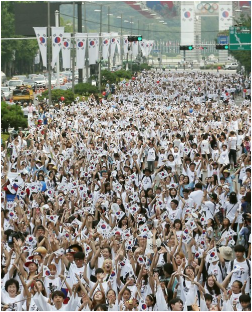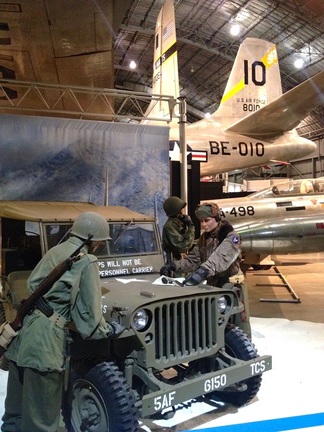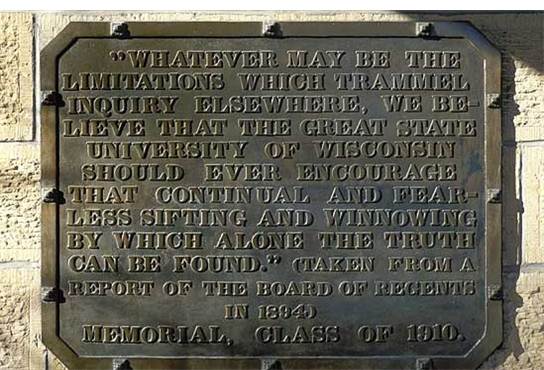|
8/22/2015 Keeping the Light Alive: Meandering in an Ohio museum on 광복절 (Korean Liberation Day)Read NowGerry Krzic, FOK Board Member  Flash Mob Dance Celebrating Korea's Liberation Day. http://www.koreatimesus.com/s-korea-celebrates-liberation-day/ Flash Mob Dance Celebrating Korea's Liberation Day. http://www.koreatimesus.com/s-korea-celebrates-liberation-day/ August 15. Koreans celebrate their liberation from Japanese colonization on August 15 every year. Known as “the day the light returned” (광복절; gwangbokjeol), 2015 was particularly notable as it marked the 70th anniversary of the event. Since liberation in 1945, the history on the peninsula has been marked by political division, a devastating war, military dictatorships, economic expansion, the establishment of democracy, a burgeoning Korean popular culture (hallyu), the Olympics, the World Cup, and Korean companies with a global presence. Since the holiday fell on Saturday this year, the country was on a long weekend holiday -- Friday through Sunday -- with activities in Seoul and Pyongyang. In the U.S., Korean-American communities also celebrated. Below: A Concert on Seoul Plaza on Friday Evening With K Pop Stars. Video Courtesy Kristin Krzic
Finally
The colonial occupation and subsequent war brought unbearable suffering to the Korean people. There are many stories of the Korean War and some accounts of the Japanese occupation that have been told. Others are waiting to be discovered -- to keep shedding light on this period in Korean War -- send a link or write a note if you know of any stories to share. One thing for certain is the scale of the 70th anniversary celebrations on 광복절 would have been unimaginable to Koreans of those earlier times. Our hope is that future celebrations continue to take place in a prosperous Korea.
3 Comments
3/17/2023 02:58:09 pm
Circumstance agrees with incident in denoting a matter of relatively slight importance, but implies a more direct connection with the principal matter; “circumstantial evidence” is evidence from seemingly minor matters directly connected with a case; “incidental evidence” would be some evidence that happened unexpectedly to touch it.
Reply
Manuel Franco
6/24/2023 08:54:20 pm
I just want to say Thank You to everyone who supported me through the years. My name is Manuel Franco, New Berlin, Wisconsin. My story of how I won the Powerball lottery of $768.4M is a bit of a tale. I have been playing Powerball tickets for 6 years now since I turned 18. I bought my first ticket on my 18 birthday. I was feeling very lucky that day because I had contacted Dr. Odunga Michael to help me with the winning Powerball numbers. I really had that great great feeling that I looked at the camera wanting to wink at it. I only did a tiny part of it and trusted him. He gave me the numbers after I played a couple other tickets along with it for $10. I checked my ticket after the winnings came online and saw the numbers were correct including the Power play. I screamed for about 10 minutes because it felt like a dream. I had won $768.4M. You can check my winning testimony with the lottery officials just with my name search. Thank you Dr Odunga. Well, his email is [email protected] and you can also call or Whats-app him at +2348167159012 so you guys can contact him
Reply
Manuel Franco
6/24/2023 08:54:56 pm
I just want to say Thank You to everyone who supported me through the years. My name is Manuel Franco, New Berlin, Wisconsin. My story of how I won the Powerball lottery of $768.4M is a bit of a tale. I have been playing Powerball tickets for 6 years now since I turned 18. I bought my first ticket on my 18 birthday. I was feeling very lucky that day because I had contacted Dr. Odunga Michael to help me with the winning Powerball numbers. I really had that great great feeling that I looked at the camera wanting to wink at it. I only did a tiny part of it and trusted him. He gave me the numbers after I played a couple other tickets along with it for $10. I checked my ticket after the winnings came online and saw the numbers were correct including the Power play. I screamed for about 10 minutes because it felt like a dream. I had won $768.4M. You can check my winning testimony with the lottery officials just with my name search. Thank you Dr Odunga. Well, his email is [email protected] and you can also call or Whats-app him at +2348167159012 so you guys can contact him
Reply
Leave a Reply. |
Details
Friends of Korea
This is a BLOG for and about Friends of Korea. Archives
May 2019
Categories |
2021 L Street, NW
|



 RSS Feed
RSS Feed

